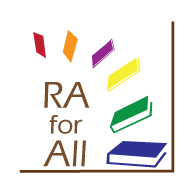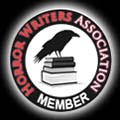I want to be clear about the "for libraries" part. Those of you out there reading this from the general horror fiction world may have some disagreement with my choices, and I would say to you, you are absolutely correct.
This is NOT a list of the very best horror written by any person in these last 10 years, rather, it is a list of titles that are important to libraries for a variety of reasons, reasons I will expand upon in the book [I mean I have to give you a reason to buy it].
As the library world's horror expert, consider this a "must have" collection development list. If you have neglected your horror sections over the last decade, this list can help you get back in horror shape.
I will give a little bit of commentary on some of the titles and have comments about the overall state of horror over the last decade afterwards. Links go to my review where possible on Goodreads.
Finally, please note, I have no Stephen King listed here. He did have some great novels in the last decade, but you don't need me to tell you to buy his books. For the most part, they come into your collections automatically. I am here to help you improve and learn, not to tell you what you already know.
Here, from 20 to 1, is Becky's Top 20 Horror for Libraries of the 2010s
20. In the Valley of the Sun by Andy Davidson
19. Rust Maidens by Gwendolyn Kiste
- These are 2 important debuts from the last 2 years and it is why I put them at the start of the list. Davidson and Kiste are names that will continue to reverberate in the next decade. Get their books in your collections now. Davidson's second novel is out early 2020.
- Yes a YA title, but for libraries, this is the perfect entry zombie novel for adults who are curious about the trope but are also a little nervous about it being "too much." Also, this novel has one of the most beautiful endings to any book I have ever read. Seriously.
- When writing the second edition of my book, I argued with one of my editors that horror was moving to include science fiction, and not just fantasy, as the speculative origin of the horror. I stood my ground on that change and I think it is safe to say, I have been proven right many times over the last 10 years. The Shining Girls is an excellent example. This is a terrifying serial killer novel, but the fear is increased and amplified by the time travel.
- The title that got him into library collections. This decade Janz established himself as the new "King of Pulps," and libraries should carry every title he puts out to serve this readership.
- Historical horror of the previous decade was dominated by Dan Simmons, but Katsu is now the leader in this subgenre, one that also happens to have a wide cross over appeal with those who do not consider themselves horror readers.
- A brilliant pulp horror modern classic, also with a SF origin to the monster. But also here because it is an example of well respected literary authors who feel the need to use a pseudonym in order to write horror. This is a trend that is still going strong. Cutter is actually Craig Davidson. Another title I loved this decade, The Reapers Are the Angels by Alden Bell is the pseudonym for Joshua Gaylord. And in early 2020 a new title The Chill will come out by Scott Carson who is really Michael Koryta. In this article, Koryta shares why he thought he needed a pseudonym for a supernatural story. It's a sad state that I hope the next decade fixes. I hope people are loud and proud about the horror they are writing. But that doesn't take away the fact that The Troop is awesome pseudonyms or not.
- A short novel [technically a novella?] that reads exactly like the title says it will. You will read it in one or two sittings because you won't be able to stop. And it will never leave you.... Another title that pairs well with Fever Dream is The Grip of It by Jac Jemc
- Dutch horror master whose first novel in English was a huge hit. It came out of nowhere to claim the top spot on the 2017 RUSA CODES READING LIST for Horror. It used techniques from classic horror of the past and incorporated new technology very well. Also, looking back, it was one of the first examples of the reemergence of the popularity of the witch trope. And it is scary as heck.
- If you work in a library you know this book needs to be on the list somewhere. It was a phenomenon both when it came out and then a few years later when it was a movie. Malerman is now one of the best known authors in the genre.
- Another example of the growing use of science fiction in horror during the decade. The first in a trilogy and, in my opinion, the best in the trilogy. When The Passage came out it was so different than anything that came before it. And it has since inspired many more like it, most recently, Wanderers. This is the big horror novel that began the decade and it is still having reverberations.
- Barron's stories are technically brilliant and immersive for the reader. He is also one of the most influential writers for today's new voices. This is one a few story collection he released in the decade, but it is also his most accessible.
- Hendrix has to be on this list somewhere. Not only have his books been ubiquitous throughout the decade but he has also become on the the genre's spokespeople to the wider world. From his award winning Paperbacks from Hell to his essays on Tor.com, on NPR, and all over social media, Hendrix proudly beats the drum for horror and its importance to all. I have chosen this title, his second because I feel like it proved that HorrorStor wasn't a one-hit-wonder.
- Kiernan is a horror master. One of the genre's greatest living writers. She is also one of its best practitioner of Lovercraftian and weird fiction. She has many novels, novellas, and story collections over the course of this decade but The Drowning Girl, is one of her best novels, period. It also is a great example of how she writes, both technically and the themes she explores.
- It's a werewolf tale yes, but it is also a coming of age story and about the underclass in America. This is the novel that brought Jones into libraries. 2020 will be his breakout year, but Mongrels foreshadowed this.
- The best horror novella Tor.com has put out in the last decade, and they have put out a lot of them [Mapping the Interior by Stephen Graham Jones is a close second]. LaValle is becoming one of the biggest and most critically acclaimed horror novelists of our time, but this novella is also an example of the trend of the reclaiming of Lovecraft by people of color and women. In this case, LaValle is retelling an actual Lovecraft story from the POV of a black man. As I like to say about this novella [you can hear me say it here too], it is as if LaValle is giving Lovecraft the middle finger while at the same time acknowledging his importance and influence.
- Hill has to be on this list somewhere, and NOS4A2 was what he called, his "horror thesis." I know this book is divisive. Personally I love it, but that is not why it is so high on the list. It's here because it is THE epic horror novel of the decade and Hill is one of the decades biggest names.
- A near perfect example of cosmic horror. Universally proclaimed the best horror novel of the year when it came out. A great introduction to modern cosmic/Lovercraftian horror for both readers and writers.
- I mean it was a finalist for the National Book Award and it 100% horror stories. Do I need to say more? This book was dark, weird, sexy, thought provoking, scary, and imaginative.
- While this novel came out right in the middle of the decade, I feel like it marks a HUGE turning point for the genre. It is a story that harkens back to the genre's classics [most obviously We Have Always Lived in the Castle and The Exorcist, but also many other titles are referenced here] and yet is also completely new. The way Tremblay crafts a horror story is gut wrenching. He breaks you, the reader throughout the course of the story and yet, you are glad you read it. You also never know if what you read was 100% real or if there was supernatural elements, and that is on purpose. I charged myself with picking THE NOVEL of the decade by creating this list and I honestly didn't argue with myself on this one.
- It is 30% women and 30% own voices. However, one of the biggest trends in horror that I am seeing is the rise of women and diverse voices producing some of the best work in the genre today. I predict that in 10 more years, these numbers will inch toward 50%.
- There are 2 works in translation on this list [Hex and Fever Dream] and one foreign author who writes in English [Beukes]. American audiences are going to start seeing a lot more horror from all over the world.
- Stories are still important in horror. As are novellas.
- Lovecraftian/Weird fiction got its foothold in this decade and has only continuing to grow. It is the most common trope right now.
- I will not use the term "literary horror" because it is a term that demeans all horror in its assumption that only select titles within the genre have literary merit, when in fact every single horror book has literary merit. Instead, I think it is important to note that the "literary" world is finally noticing horror as worthy of their esteem. This list contains multiple titles that have been nominated for or won national literary awards.
I will have much more about this list and the current state of horror in the new book. It will be done by the end of 2020 and out for libraries to purchase in mid 2021. But this is a lot of useful information for you to use right now.
Finally, I would also like to thank librarian and horror author Corey Farrenkopf, for giving this list the once over and giving me invaluable feedback that improved this list.












